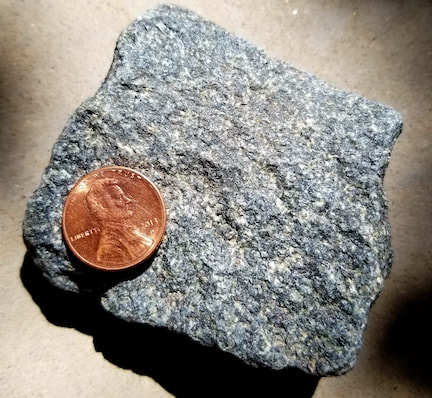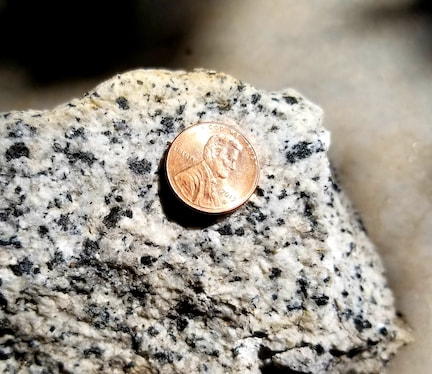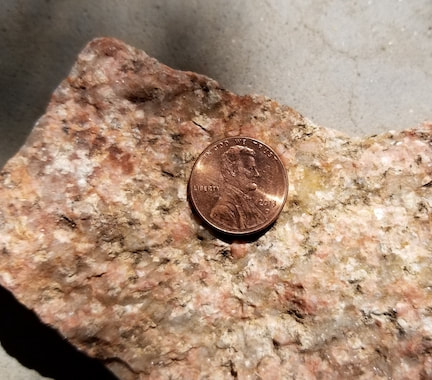The same naturalists who assigned lava and ash to the god Vulcan recognized that these once deeply-buried granitic rocks belonged to the realm of a darker and more deeply-throned god, Pluto, the god of the underworld. Consequently they are grouped together as the plutonic rocks.
Unlike the volcanic rocks, the textures of plutonic rocks are uniformly crystalline. As we've noted, this is a function of their environment of cooling, insulated beneath miles of crust, under enormous confining pressures.
But like the volcanic rocks, the color and silica content of the plutonic rocks varies according to their mineral content.
Silicate minerals rich in iron and magnesium are typically dark in color. These are the minerals we labeled mafic. Plutonic rocks rich in mafic minerals are correspondingly dark, like this gabbro:
Unlike the volcanic rocks, the textures of plutonic rocks are uniformly crystalline. As we've noted, this is a function of their environment of cooling, insulated beneath miles of crust, under enormous confining pressures.
But like the volcanic rocks, the color and silica content of the plutonic rocks varies according to their mineral content.
Silicate minerals rich in iron and magnesium are typically dark in color. These are the minerals we labeled mafic. Plutonic rocks rich in mafic minerals are correspondingly dark, like this gabbro:
Silicate minerals lacking iron and magnesium are light in color and relatively high in silica. Plutonic rocks composed of these minerals are light-colored as well, although they nearly always have at least a sprinkling of mafic minerals to give a pleasant contrast, like this granite from the Sierra Nevada:
Much of the granite in the Southern Rocky Mountains is pink or orange in color. The principal mineral in all plutonic rocks is feldspar, an aluminum-rich silicate, and in the old continental core of North America, most feldspar is rich in the metallic element potassium. Potassium feldspar is pink.
Of course nature admits all sorts of intermediate cases between the poles of gabbro and granite. Classification schemes for the plutonic rocks were not standardized until the 1970's, and even today there is a whiff of dissatisfaction with the choices and their names. Geologists are not about to give up their beloved old rock names - diorite, tonalite, monzonite, syenite - which are rich with historical overtones, and every attempt to rationalize the classification of these complex rocks just makes things worse.




 RSS Feed
RSS Feed
